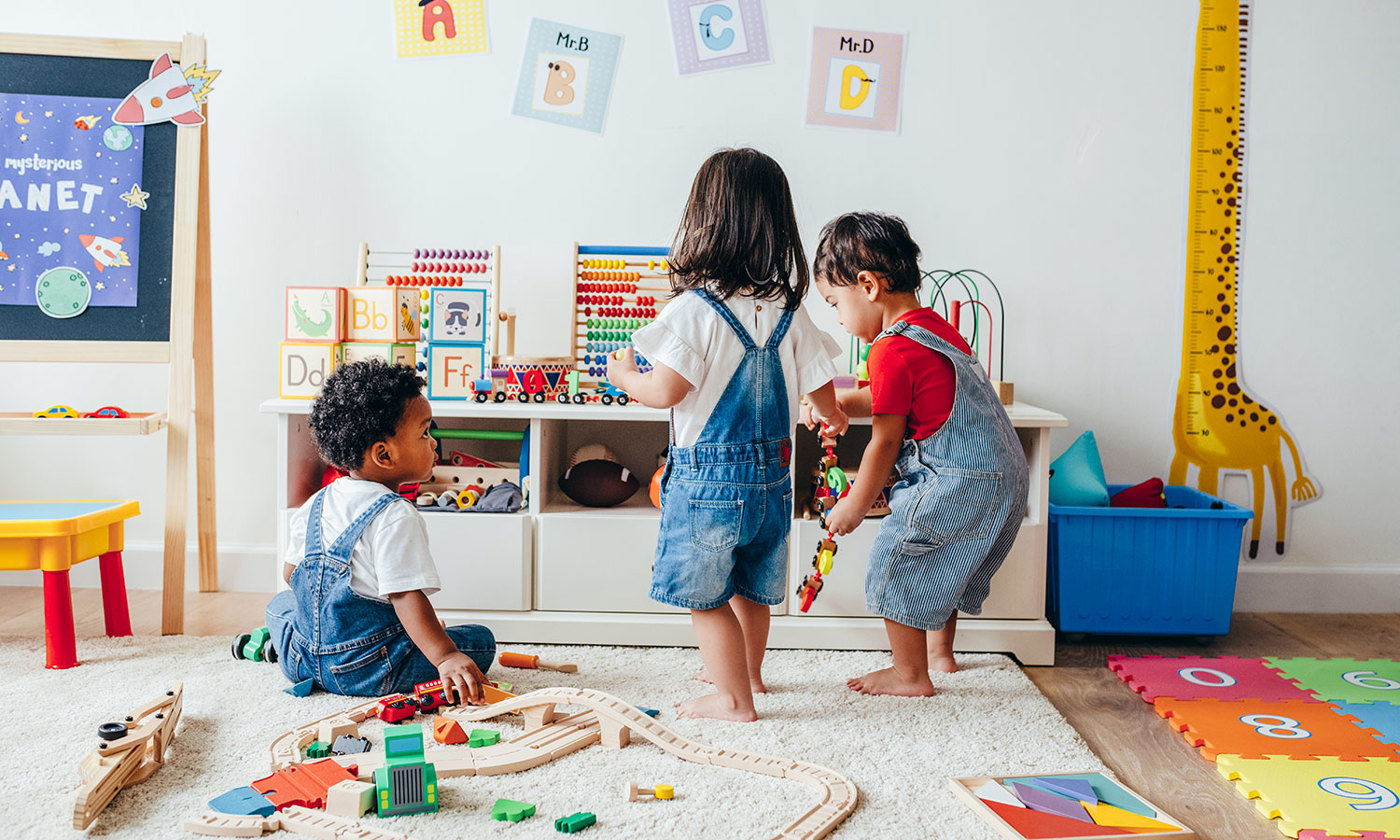Like what you see?
Sign up to receive more free parenting advice.
Thank you for subscribing to our newsletter!
Child Development

Credit: iStock.com/Rawpixel
Our children are exposed to messages about gender from birth. Society has traditionally told us how girls and boys should speak, look, dress and act, however preschoolers are now growing up in a world in which children are being encouraged not to be limited by gender, to talk openly about gender identity and that families come in all shapes and sizes.
So how can you prepare to talk to your preschooler about gender identity?
Step One
You may want to start by considering your own beliefs and the messages you want to share with your child. Do you want them to accept people who are different to them? Know how to ask questions when people appear different, but be respectful? Understand that accomplishments are not related to gender?
Step Two
The second step may be looking at the example you set in terms of your actions and language. Do you make gender assumptions instinctively that perhaps are limiting, such as choosing ‘girl’ or ‘boy’ toys or activities?
Step Three
The third step is learning how to answer questions like “are they a boy or a girl?”. Understanding the use of pronouns and how to explain non-binary to children may be new to many people. It’s okay to make mistakes. Apologise promptly and move on. But educating yourself first can help you in those moments when children ask potentially uncomfortable questions.
Professor Mary Lou Rasmussen, Head of School of Sociology at ANU, explains that the term gender neutral can be misleading.
“It suggests that there is a neutral position you can take on gender, which is not true.
“People who are often identified as gender neutral are actually questioning the gender binary and how it applies to them and other people.
“Gender binary is an assumption that your biological sex, which is male or female, aligns with your gender: masculine or feminine.
“Some people feel like they want to adhere to a gender identity and others want to have a relationship with gender identity that rejects the binary.”
Professor Rasmussen says that parents are increasingly wanting options that don’t reinforce the binary.
In fact, this year LEGO announced it would remove gender stereotypes from its popular toy brand, including gender specific marketing.
After surveying 7,000 parents and children from seven countries, they found boys feel more pressured to conform to gender norms for creative activities compared to girls, while perceptions and beliefs from other people hold girls back later in life.
“We are also seeing a generational shift when it comes to thinking about gender as something that is more than two,” adds Professor Rasmussen.
“For young people, questioning the gender binary is quite common and quite a few young people would know of other young people who are questioning how the gender categories relate to them.
“While for older people, it might be much less common.”
It’s difficult to understand how much of the Australian population identify as non-binary as it was only this year that the Australian Bureau of Statistics (ABS) census provided an option for participants to identify as non-binary.
In 2013, the Sex Discrimination Act 1984 was amended to introduce new protections from discrimination on the grounds of sexual orientation, gender identity and intersex status in many areas of public life. These legal protections are complemented by the Australian Government Guidelines on the Recognition of Sex and Gender. The guidelines recognise that individuals may identify as a gender other than the sex they were assigned at birth, or may not identify as exclusively male or female. This means all Australian Government departments and agencies must provide a third gender option, allowing those who don’t identify as male or female the ability to choose to represent their gender with an “X” instead.
For young people, questioning the gender binary is quite common and quite a few young people would know of other young people who are questioning how the gender categories relate to them.Professor Mary Lou Rasmussen
Stay up to date with the latest news and articles from First Five Years
Thank you for subscribing to our newsletter!
Strategies to navigate gender non-binary
In 2021, Australian researchers found that children, as young as three and four years old, displayed gender stereotyping and prejudice as they take on cues from their social and cultural environment.
The research highlighted the need to understand ways to support children in developing equitable gender attitudes in early childhood, not only to benefit them across their lifetime, but to also benefit society.
“Generally speaking, children who encounter other children, or adults, who are not employing gender pronouns only notice it if it is brought to their attention,” explains Professor Rasmussen.
Eventually children will ask and when they do, some parents can feel quite out of their depth.
“It’s important to remember that gender is not the only thing about us,” recommends Professor Rasmussen.
“You can explain that this child, or adult, is choosing not to identify as a boy or girl, but then turn the conversation to pointing out all of the other interesting aspects of that person.
“It might be about what they like to do, what they are good at, where they live, how many siblings they have… try not to have gender as the central category for understanding who a person is.”
She also recommends using books and stories as a strategy for starting conversations with young children about the fluidity of gender.
As for pronouns, Professor Rasmussen highlights that they can be fluid.
“Some people opt for she/her or they/them, while, for example, others opt for she/they to be both feminine and non-binary,” she explains.
“While some use Mx as a prefix instead of Ms or Mr.
“It’s important to remember, there are no hard and fast rules of how people want to be identified to other people.”
How to use pronouns
A noun is a word we use to describe a person, place, thing or idea. A pronoun is used instead of a noun, such saying 'you' instead of using someone's name. Some imply gender, such as 'she' or 'he'. Men who identify as masculine use the pronoun ‘he’ and women who identify as feminine use the pronoun ‘she’.
Some people use a gender-neutral pronoun such as ‘they’ (e.g., 'Pip drives their car to work. They don’t like walking because it takes them too long'). If you’re unsure what someone’s pronoun is, you can ask them respectfully, and preferably privately. Use a question like 'Can I ask what pronoun you use?.' Do not ask 'What pronoun do you prefer?' A person’s pronoun and identity are not a preference. Instead, just ask what pronoun they use. 1
Some people with nonbinary genders prefer to be described as 'zie' (pronounced zee) - an English pronoun used instead of 'she' or 'he' by some people who don't identify as women or men. Some people with non-binary genders prefer to have 'she' and 'he' used interchangeably to signal that they do not fit as either women or men. Other people prefer to be described using only their first name. Using someone's first name instead of a pronoun, we would say "Terry cycles to Terry's corner grocer."2
Picture books that discuss gender fluidity:
- The Gender Fairy by Jo Hirst
- A House for Everyone by Jo Hirst
- The World Needs More Purple People by Kristen Bell and Benjamin Hart
- Red: a Crayon's Story by Michael Hall
- Pink! by Lynne Rickards
- My Princess Boy by Cheryl Kilodavis







